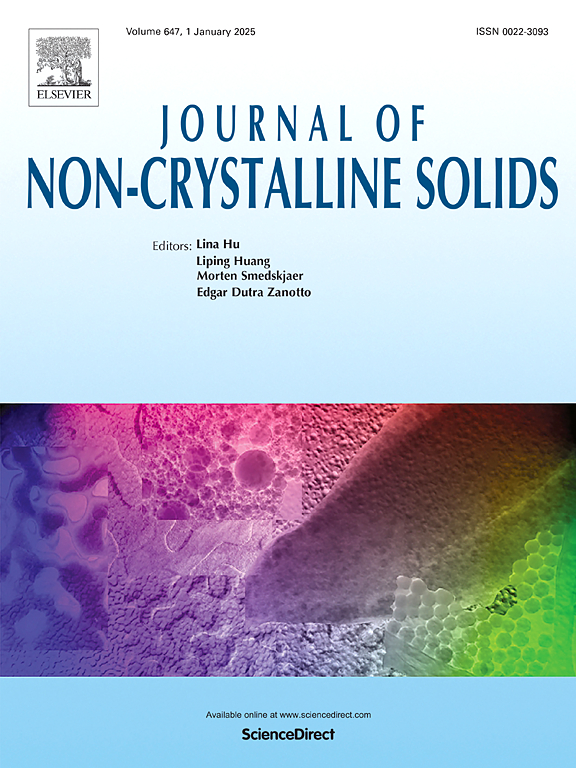Glass-derived Spinel ZnFe2O4 anode for half- and full Li-ion batteries
IF 3.2
3区 材料科学
Q1 MATERIALS SCIENCE, CERAMICS
引用次数: 0
Abstract
In this work, we developed the spinel ZnFe2O4 (ZFO) anode for lithium-ion batteries (LIBs). ZFO crystals were precipitated from a series of 40Fe2O3-(60-x)ZnO-xB2O3 (mol %) glass-ceramics (designated as ZFOBx), which were produced via melt-quenching. Among these glass-ceramics, the sample with 20 mol % B2O3 (ZFOB20) demonstrated the best electrochemical performance, attributed to its optimal content of ZFO crystals and a B2O3-rich glassy phase that gave the highest electronic conductivity. The ZFOB20 glass-ceramic anode delivered a discharge capacity of 526 mA h g−1 at 1 A g−1 even after 500 cycles, and exceptional rate capability due to its unique structure. Furthermore, the ZFOB20//LiCoO2 full-battery displayed an initial specific capacity of 148 mA h g−1, retaining 67 % of its capacity after 30 cycles at 0.1 A g−1. This work indicates that the ZFO crystal derived from ZFOBx glass-ceramics is a promising material for fabricating high-performance LIB anode.
半和全锂离子电池用玻璃衍生尖晶石ZnFe2O4阳极
在这项工作中,我们开发了锂离子电池(LIBs)用尖晶石ZnFe2O4 (ZFO)阳极。采用熔体淬火法制备了40Fe2O3-(60-x)ZnO-xB2O3 (mol %)微晶玻璃(简称ZFOBx),得到了ZFO晶体。在这些微晶玻璃中,B2O3含量为20 mol %的样品(ZFOB20)表现出最好的电化学性能,这是因为它的ZFO晶体含量最佳,并且富含B2O3的玻璃相具有最高的电子导电性。ZFOB20玻璃陶瓷阳极即使在500次循环后,在1 a g−1下也能提供526 mA h g−1的放电容量,并且由于其独特的结构而具有出色的倍率能力。此外,ZFOB20//LiCoO2全电池的初始比容量为148 mA h g−1,在0.1 A g−1下循环30次后仍保持67%的容量。研究表明,由ZFOBx微晶玻璃制备的ZFO晶体是一种很有前途的高性能锂离子电池阳极材料。
本文章由计算机程序翻译,如有差异,请以英文原文为准。
求助全文
约1分钟内获得全文
求助全文
来源期刊

Journal of Non-crystalline Solids
工程技术-材料科学:硅酸盐
CiteScore
6.50
自引率
11.40%
发文量
576
审稿时长
35 days
期刊介绍:
The Journal of Non-Crystalline Solids publishes review articles, research papers, and Letters to the Editor on amorphous and glassy materials, including inorganic, organic, polymeric, hybrid and metallic systems. Papers on partially glassy materials, such as glass-ceramics and glass-matrix composites, and papers involving the liquid state are also included in so far as the properties of the liquid are relevant for the formation of the solid.
In all cases the papers must demonstrate both novelty and importance to the field, by way of significant advances in understanding or application of non-crystalline solids; in the case of Letters, a compelling case must also be made for expedited handling.
 求助内容:
求助内容: 应助结果提醒方式:
应助结果提醒方式:


